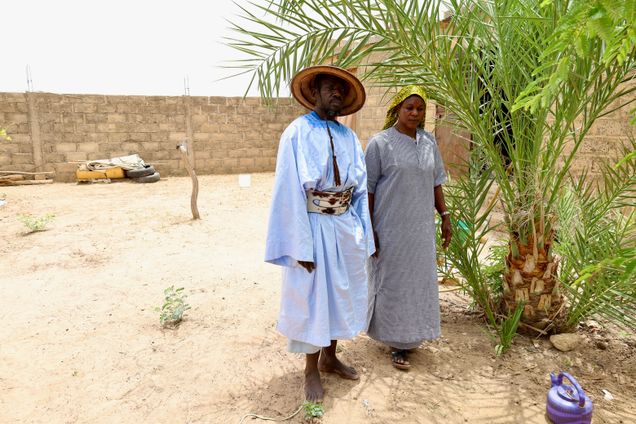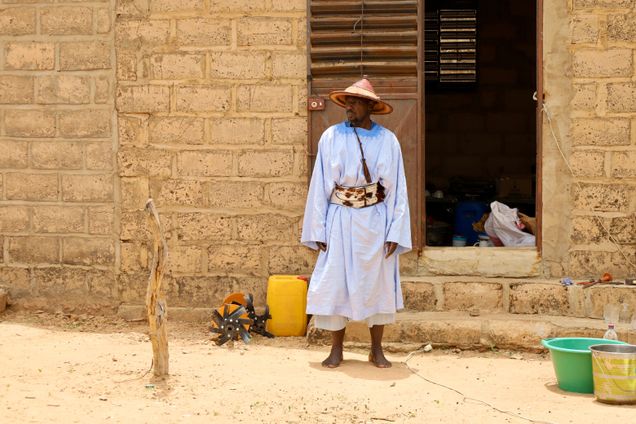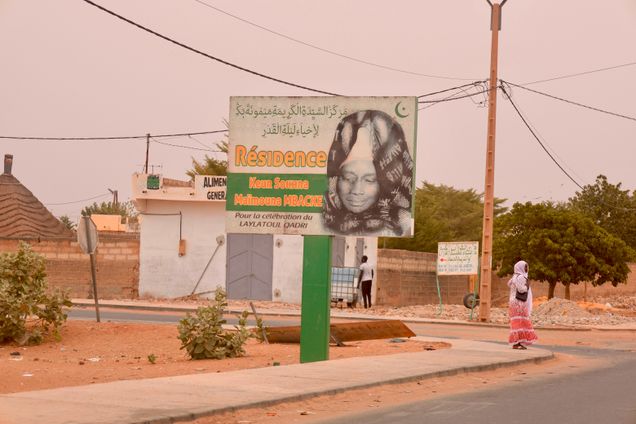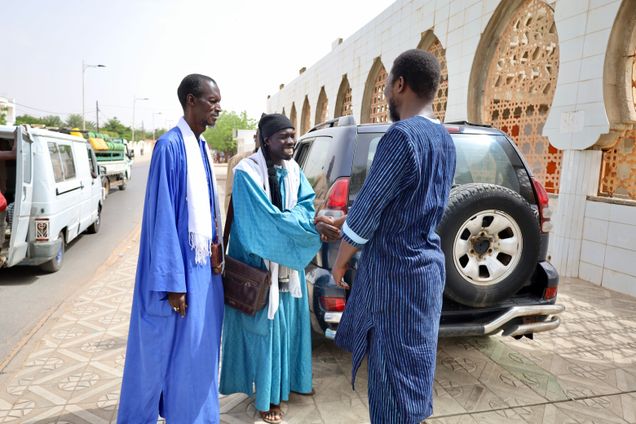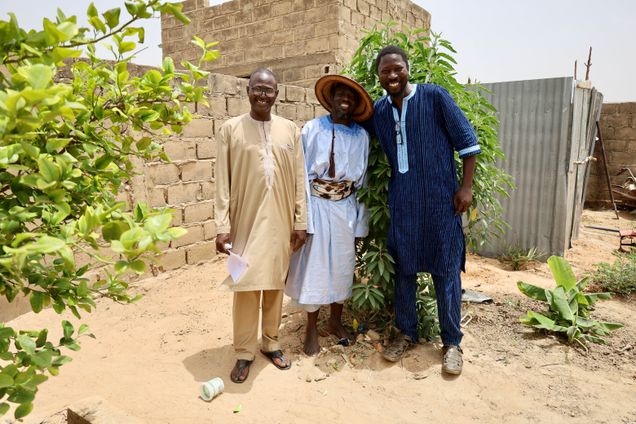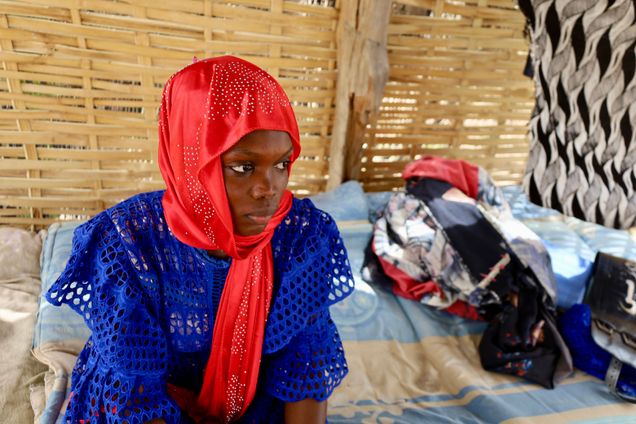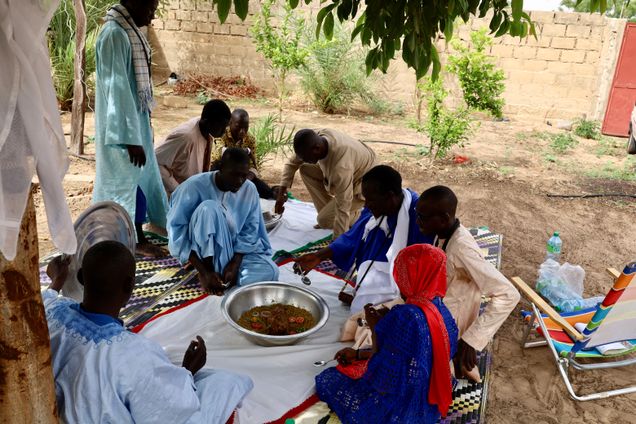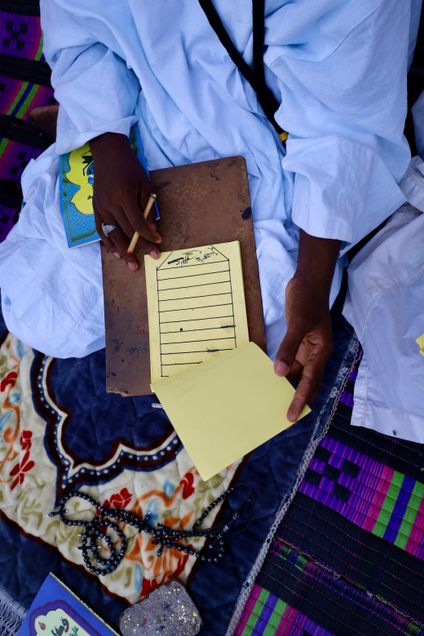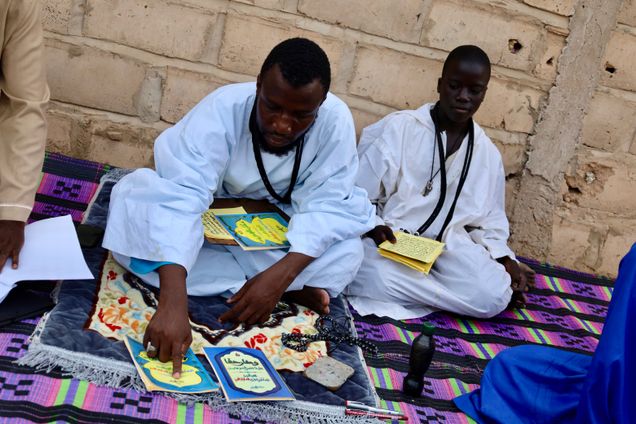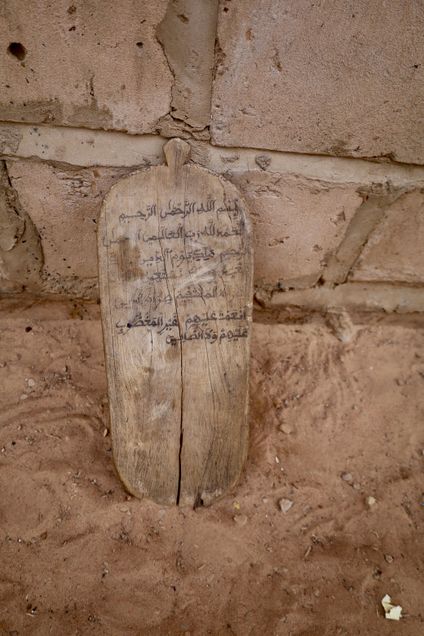Unit 5B: Abdou Lahad Touré
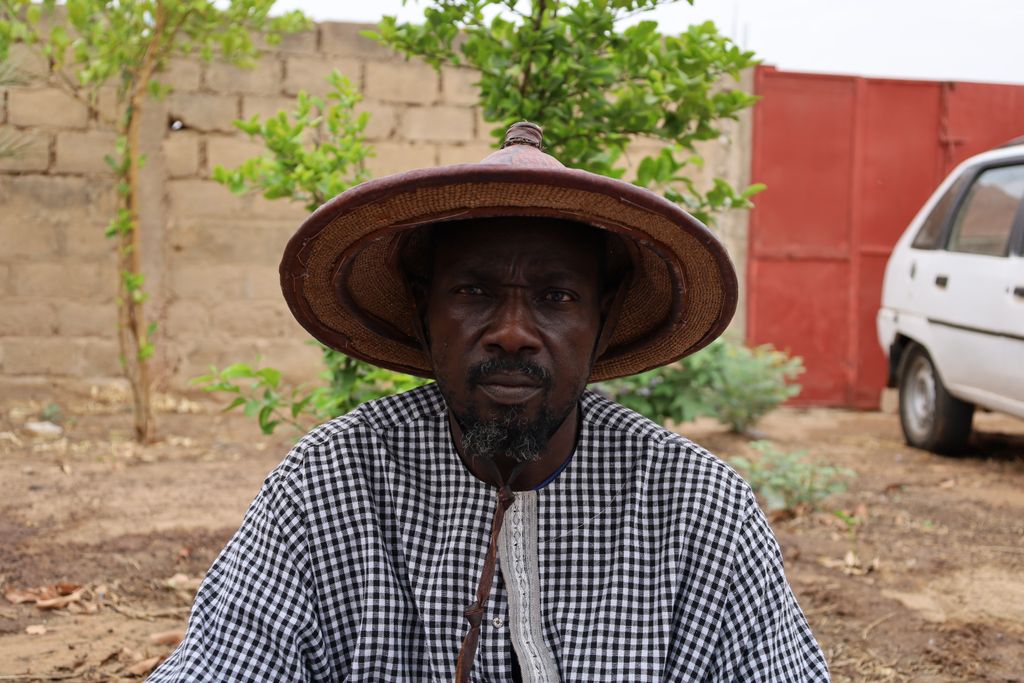
Metadata
| Title | Conversation with Abdou Lahad Touré |
| Interviewer | Fallou Ngom |
| Subject | Life story and education, becoming a professional Ajami poetry singer, leadership of Shaykh Abdou Lahad Mbàkke, history of the preservation of Murid Ajami Archives |
| Content | Abdou Lahad Touré (Abdu Lahad Ture in the standard Wolof Latin script orthography) is the most famous contemporary Wolof Ajami singer. He was born in 1960 and raised in the village of Ture-Ngan near Ndànd, in the region of Louga, Senegal. In this interview, Mr. Touré discusses how he became a professional singer of Wolof Ajami poetry thanks to the leadership of the third caliph of the Muridiyya, Serigne Abdou Lahad Mbacké (1914-1989), also known as Sëriñ Abdu Lahad or Abdu Lahat Mbàkke. He shares his first encounter with this Murid leader and the story of how he personally coached him to become specialized in singing the poetry of Sëriñ Mbay Jaxate (1875-1954), one of the most famous Wolof Ajami poets who was a close follower of the founder of the Muridiyya Sufi order, Shaykh Ahmadu Bamba (1853-1927). Abdou Lahad Touré also discusses Caliph Abdou Lahad Mbacké’s pioneering efforts in collecting and recording recitations of Mbay Jaxate’s poems and preserving them for posterity. He highlights how the Murid leader loved Mbay Jaxate’s poems, especially the one where the poet gives him important advice. In Murid communities, Caliph Abdou Lahad is remembered as a visionary leader who built important infrastructures in the city of Touba, including the central library known as Daaray Kaamil and Bibliothèque Cheikhoul Khadim. At the end of the interview, Abdou Lahad Touré recites a poem he composed to honor his beloved leader for his achievements and legacy. |
| Language | Wolof |
| Script | Wolof Ajami (locally called Wolofal) |
| Location | Touba, Senegal |
| Pedagogical content/application | Includes relevant linguistic, stylistic and cultural skills as identified in our assessment guidebook/ ACTFL guidelines |
| Access condition and copyright | These materials are subject to copyright and are distributed under the terms of the Creative Commons Attribution-NonCommercial 4.0 License, which permits non-commercial use, distribution, and reproduction in any medium, provided the original author and source are credited. For use, distribution or reproduction beyond these terms, contact Professor Fallou Ngom (fngom@bu.edu). |
| Contributors | Fallou Ngom, Ablaye Diakite, Daivi Rodima-Taylor, Elhadji Djibril Diagne, Gana Ndiaye, Alison Parker, and Frank Antonelli. |
| Required citation information | Fallou Ngom (PI), Ablaye Diakite, Elhadji Djibril Diagne, Daivi Rodima-Taylor, and other contributors. 2023. “Conversation with Abdou Lahad Touré.” https://sites.bu.edu/ria/wolof/wolof-unit-5b/ |
Videos
Wolof with English Subtitles
Wolof with Latin Script Subtitles
Community Images
(click on the image for a larger view)
Pedagogical Activities
Glossary
- Àgg: To arrive, reach, attain, finish
- Asamaan set, bët-set: Daybreak, early morning
- Barab, bërëb b-: Place, space, grave
- Bayit, bëyit b-: Verse of a poem
- Benn yoon: Once, one time
- Coobare g-: Will, intent, choice
- Daje: To meet, encounter, cross path
- Dégg: To hear, speak (a language), understand
- Déglu: To listen, pay attention
- Diggante b-: Between, within, in the meantime; relationship
- Diine: Religion, from Arabic dīn
- Enristre: To record with a tape recorder, from French enregistrer
- Fàttali: To remind
- Jaay: To sell
- Kóor g-: Fasting, month of Ramadan
- Loyalu b-, loyalu g-: Keyboard
- Miin: To be familiar with, be accustomed to, be used to
- Muslaay g-: Protective talisman or prayer
- Portale b-: Image, portrait, photo, from French portrait
- Raay b-: Railway, from French rail
- Saar w-: Quranic lesson, chapter
- Sabab: To motivate, cause, provoke
- Seex b-: Religious leader, from Arabic Shaykh
- Sët b-: Grandchild
- Soxal: To be interested, be concerned
- Tagg: To praise, celebrate, cheer
- Toppatoo: To look after, care for, take care of
- Wéttali: To keep company
- Yitté j-: Preoccupation, desire, purpose, concern
Notes
- Fuzti: An Arabic poem written by Shaykh Ahmadu Bamba (1853-1927) dedicated to the mother of Jesus Christ, Mary. In the poem, Bamba praises her divine gifts, virtues and exceptional human qualities.
- Mbër: The Wolof word for a traditional African wrestler. In Wolof Sufi discourse, the term is used as a metaphor for saints, the Prophet Muḥammad, and God. It is also used sometimes as a metaphor for Satan (Iblīs), the Greatest Champion of unrighteousness.
- Njaaréem: Also known as Jurbel and spelled as Diourbel in the nonstandard French-based spelling, is the name of a city and a region located in central Senegal where Shaykh Ahmadu Bamba was kept under house arrest from 1912 to his death in 1927.
- Seex Muhammadu Mustafaa or Shaykh Moustapha Mbacké (1888-1945): Also known as Móodu Mustafaa, he was the eldest son of Shaykh Ahmadu Bamba and the first Caliph of the Muridiyya (1927-1945). He was the one who began the construction of the mosque of Touba in 1930.
- Sëriñ Abdu Lahad Mbàkke, Serigne Abdou Lahad Mbacké, or Baay Lahad (1914-1989): A son of Shaykh Ahmadu Bamba and the third Caliph of the Muridiyya (1968-1989). He is also known as The Builder in Murid communities due to the modern infrastructures he built in Touba.
- Sëriñ Abdu Xaadir Mbàkke or Serigne Abdou Khadre Mbacké (1914-1989): A son of Shaykh Amadu Bamba and the fourth Caliph of the Muridiyya (1988-1989). He served as the lead imam of the mosque of Touba during his life. According to Murid hagiographers, he never left Touba after the death of his brother, Muhammadu Mustafaa Mbàkke, who served as the first caliph of the Muridiyya.
- Sëriñ Mbay Jaxate or Serigne Mbaye Diakhaté (ca. 1876-1951): A disciple of Shaykh Ahmadu Bamba and one of the most famous Wolof Ajami poets. He was the son of the renowned judge Xaali Majaxate Kala or Qādi Majaxate Kala (1835-1902). Mbay Jaxate began his poetic career during Bamba’s exile in Mauritania (1902-1907). His work focused on social criticism, satire, and the code of ethics of Murid discipleship.
- Sëriñ Suhaybu Mbàkke or Serigne Souhaibou Mbacké (1918-1991): A son of Ahmadu Bamba who is remembered in Murid communities as a great scholar and Quranic teacher who educated many children.
Exercises:
Comprehension || Writing || Listening / Speaking and Conversation || Cultural Competence
Comprehension: Video
Comprehension: Image
Writing
Listening / Speaking and Conversation
- Ay Laaj yu Gàtt: Bindal ay laaj yu gàtt ci li widewoo bi ëmb. Soo noppee, indi leen ci daara ji ngir laajante ci ak say naatango.
Cultural Competence
- Jëlal ci widewoo bi ay fànn te nga bind leen. Boo noppee, na nga leen méngale ak fànn ya ñu nirool ca fa nga dëkk. Woneel li ñu bokk ak li leen wuutale.
